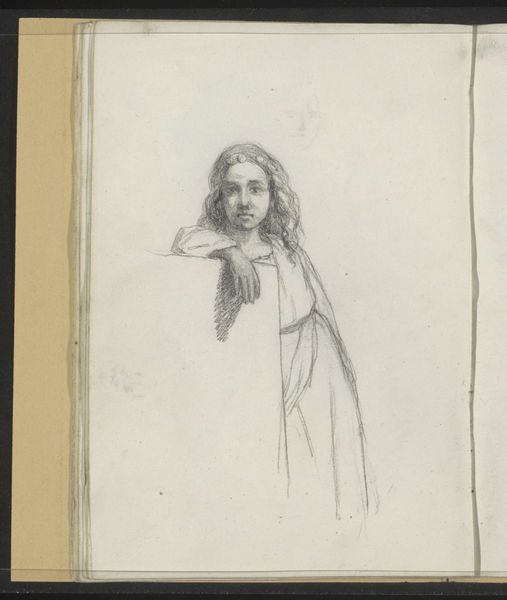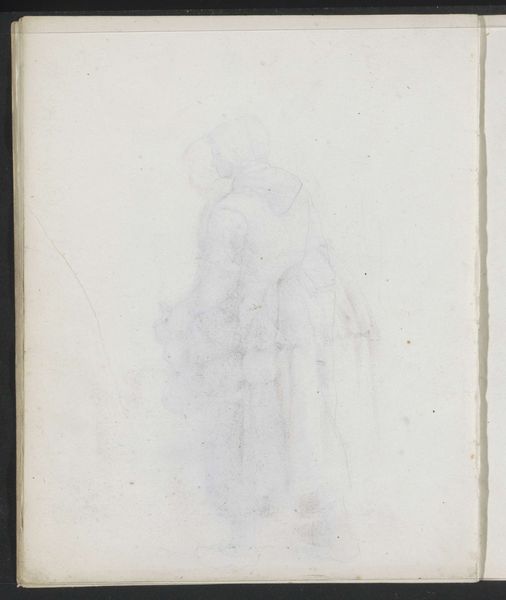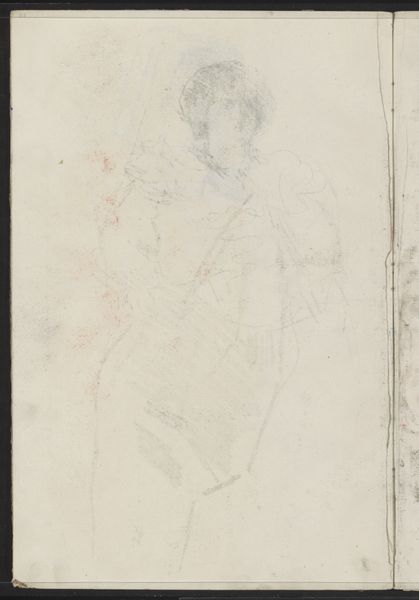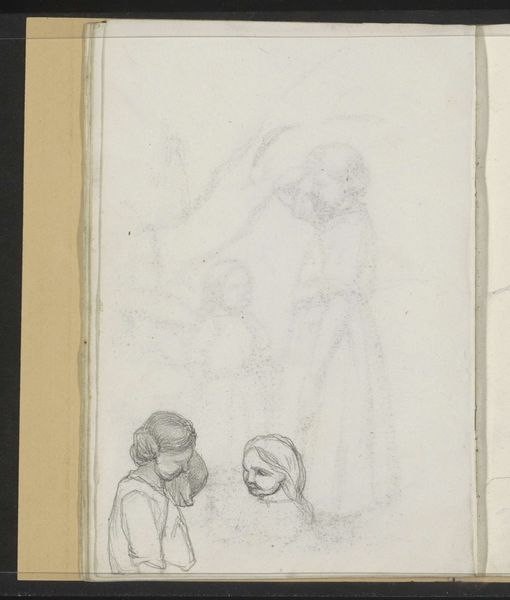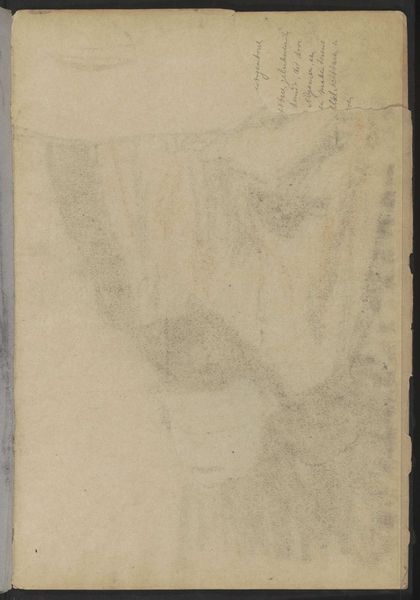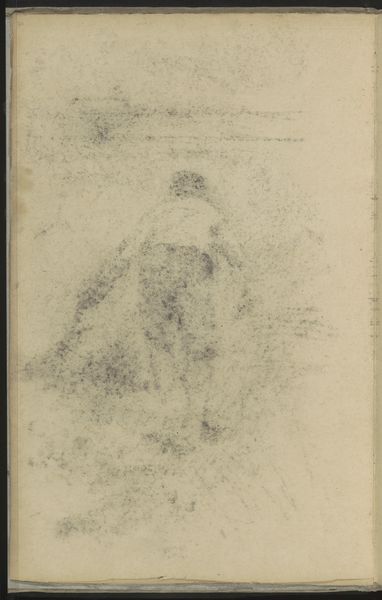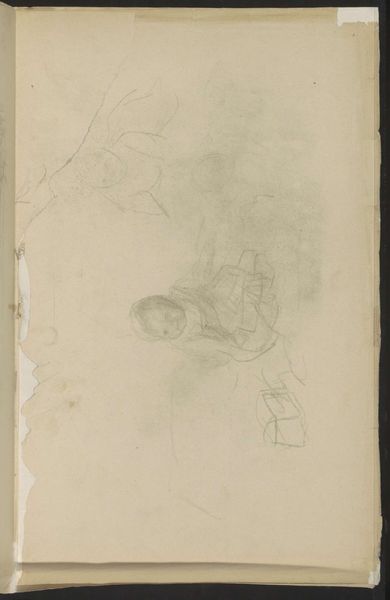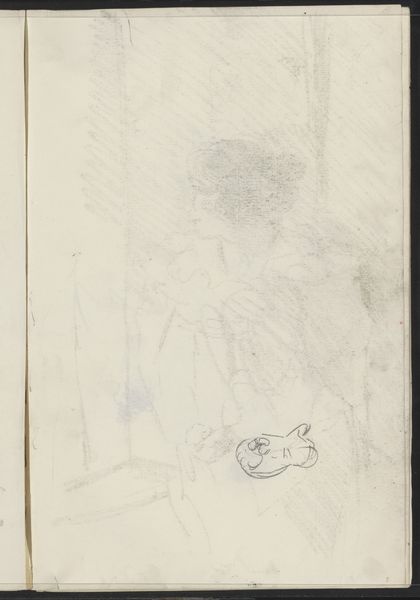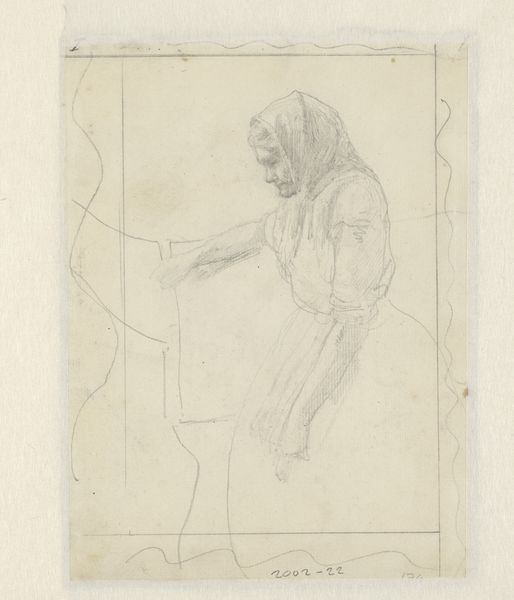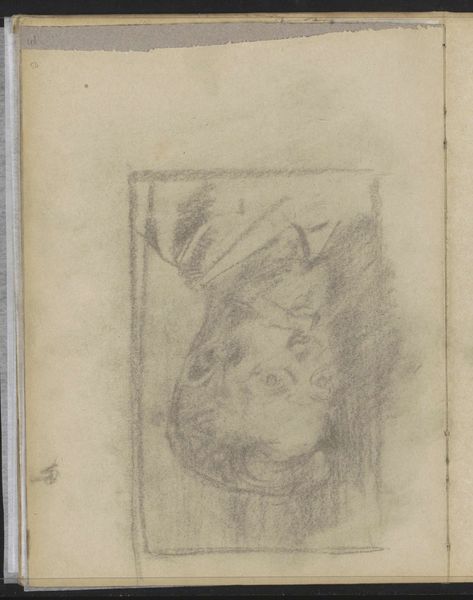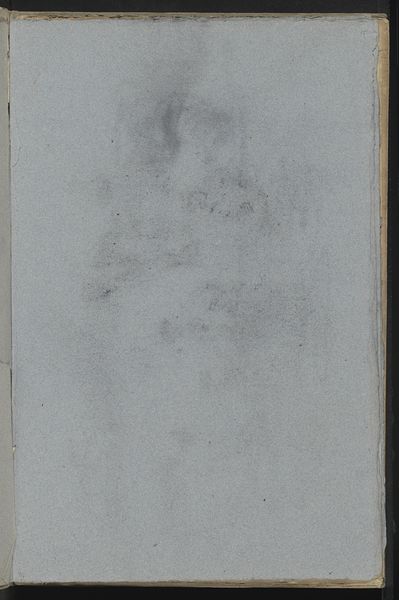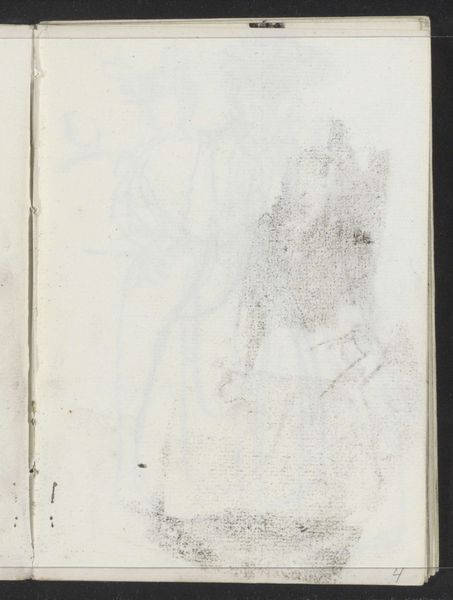
drawing, pencil
#
portrait
#
drawing
#
16_19th-century
#
coloured pencil
#
pencil
#
realism
Copyright: Rijks Museum: Open Domain
Editor: So, this pencil drawing is called "Abklatsch van de potloodtekening op pagina 11 verso," dating from between 1834 and 1911, by Jozef Israëls. It's currently held at the Rijksmuseum. I'm immediately struck by how faint it is, almost ghostly. What do you make of it? Curator: The spectral quality you notice is significant. It invites us to consider the ephemeral nature of memory and representation. The woman seems veiled not just by fabric, but by time itself. Do you notice how the artist uses the medium – pencil – to evoke a sense of fragility? Editor: I do, it’s as if she might fade away completely. Is the veiling symbolic? Curator: Absolutely. Throughout art history, veils have served as powerful symbols – concealing, protecting, suggesting hidden truths. What cultural associations does this imagery evoke for you? Think about societal roles of women in the 19th century. Editor: Perhaps modesty or mourning? I guess it speaks of repression too? Curator: It touches on all of those things, yes. Consider also the *act* of drawing as a means of preserving something, perhaps from oblivion. Israëls is imbuing the sketch itself with symbolic weight. What sort of untold stories do you imagine might lie within? Editor: That’s an interesting approach; the symbol extends to the artmaking process itself. It’s really given me a lot to think about. Curator: Indeed. A seemingly simple sketch reveals layers of meaning once we begin to unravel its symbolic language.
Comments
No comments
Be the first to comment and join the conversation on the ultimate creative platform.
